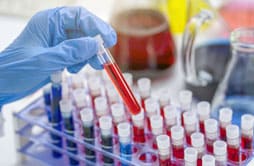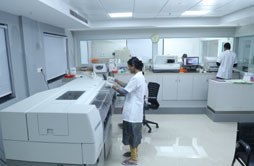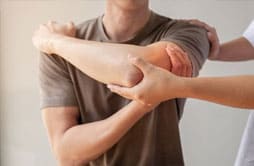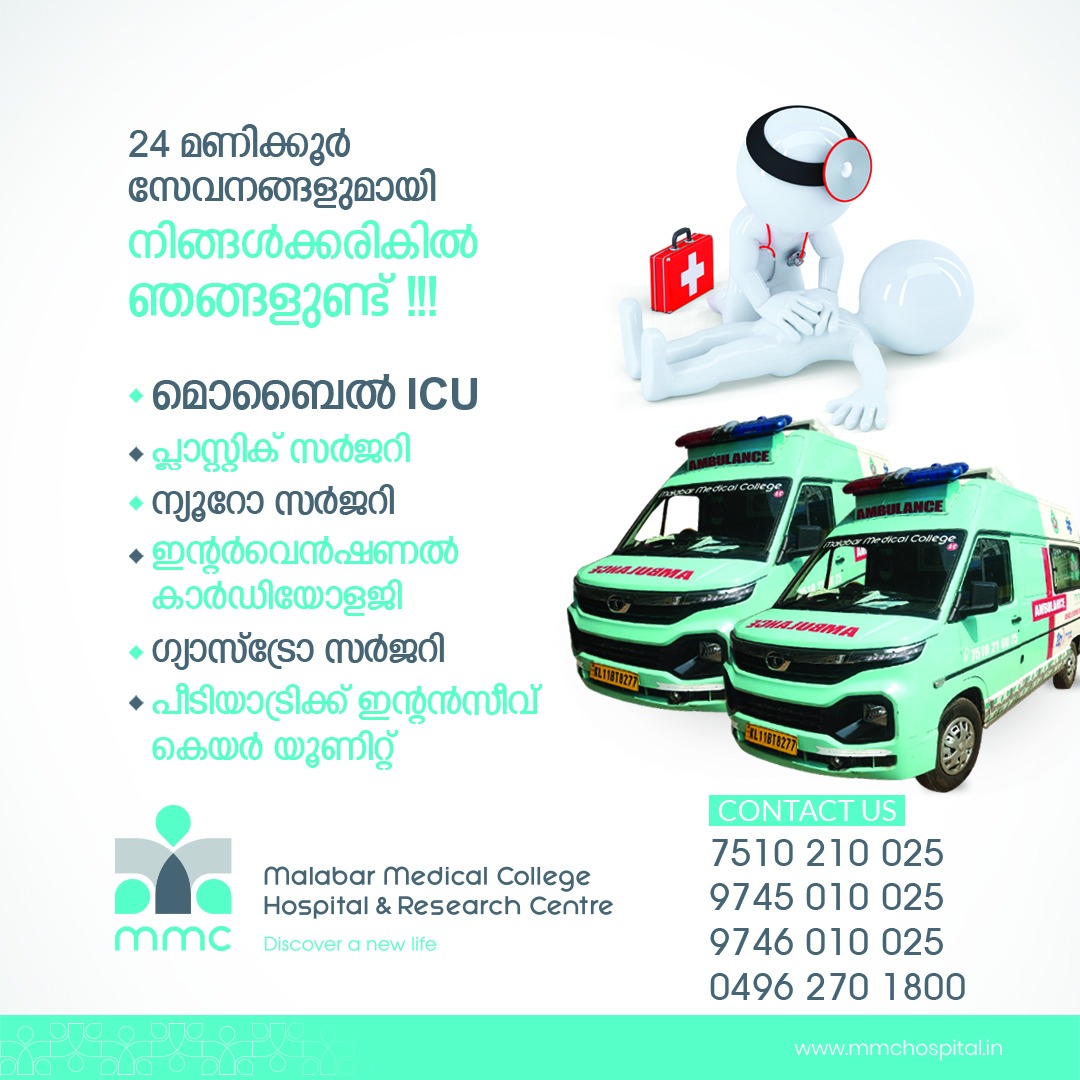Our values are PATIENT first
- P-Patient First
- A-Accessibility
- T - Team Work
- I-Integrity
- E-Empathy
- N-Newness
- T-Translucency
 0496 2701800
| 0496-350 1800
0496 2701800
| 0496-350 1800
Get Appointment
 7510210025
7510210025
Emergency Call

Founded in 2009, the Malabar Medical College Hospital & Research Centre Blood Centre has grown into a premier institution committed to providing high-quality, affordable blood banking services with the vision of becoming a “MODEL BLOOD CENTRE”. Over the years, we have embraced technological advancements, ensuring that our services meet international standards of safety, reliability, and efficiency. What began as a small operation with a handful of technicians and one doctor has evolved into a state-of-the-art facility with 24/7 services and comprehensive transfusion solutions.
At the heart of our department lies a dedication to safety, reliability, and rationality in transfusion services. We place a strong emphasis on promoting voluntary, non-remunerated blood donation, working closely with local blood donor organizations, educational institutions, religious groups, political entities, and non-governmental organizations. Through a combination of in-house and field donation camps, we ensure a steady supply of blood while enhancing the donor experience and fostering a loyal base of repeat donors. Recognized among the super-specialty hospitals in Calicut, Malabar Medical College plays a crucial role in supporting complex medical cases through its advanced blood centre, ensuring the timely availability of safe and compatible blood components.
Safety is the cornerstone of our operations. We employ chemiluminescence technology to screen for Transfusion Transmissible Infections (HIV, Hepatitis B, and Hepatitis C), ensuring the safety of both donors and recipients. Our advanced immunohematology services include the use of Column Agglutination Technology (CAT) to guarantee blood compatibility and minimize the risk of transfusion reactions.

Our commitment to quality is uncompromising. We strictly follow Standard Operating Procedures (SOPs) and are active participants in the External Quality Assurance Scheme (EQAS), ensuring that all our processes meet global standards. We regularly convene Transfusion Committee Meetings and conduct continuous audits to assess and improve our practices. Ongoing staff training and proficiency testing ensure that our team remains at the forefront of transfusion medicine.
Our deep engagement with the local community is a key aspect of our mission. We maintain strong relationships with nearby hospitals and actively promote voluntary blood donation through our outreach programs. Our student-led Blood Donors Forum “RUBRO” plays a pivotal role in organizing blood donation drives, especially during medical emergencies when patients are unable to arrange donors. This initiative has fostered a culture of regular, repeat voluntary blood donation among students and the wider community.
In our quest to share knowledge, we aim to become a training centre for clinicians, medical officers, laboratory technicians, nurses, and donor recruiters, helping to raise the standards of transfusion medicine. We also extend our support to other hospitals in the region, assisting them in developing their blood component transportation, storage, and transfusion support capabilities.
We are dedicated advocates against the social barriers that hinder voluntary blood donation and actively campaign for ethical and safe blood donation practices.
At the Malabar Medical College Blood Centre, compassion is not just a value; it is the driving force behind everything we do. We understand that behind every blood transfusion is a life in need, and our mission is to provide more than just clinical excellence—we aim to offer care with empathy. Whether it’s supporting families through medical emergencies, ensuring donors have a comfortable and fulfilling experience, or working tirelessly to meet urgent blood requirements, our team approaches every situation with a deep sense of responsibility and compassion. We believe that this human connection, coupled with our advanced medical services, is what truly makes a difference in the lives of those we serve.
The Malabar Medical College Blood Centre continues to evolve, driven by our commitment to improving transfusion services & become “MODEL BLOOD CENTRE”. Our vision is to remain at the forefront of blood banking, enhancing our capacity to serve the community and ensuring that no patient suffers due to a lack of timely, safe, and compatible blood components.

Diet plays a vital role in the treatment. Patient’s proper diet is the key of good health. Inadequate and improper diet are not only responsible for under nutrition but also contribute to several chronic degeneration diseases such as cardiovascular disease diabetes and cancer.
The clinical nutrition and dietetics department which consist of dietitian got a role in the dietitian making system for patients care. Dietitian not only a cater to the patient’s food requirement but also they are responsible for the planning prescribing and counseling patient’s about their diet according their diseased condition.
Diet therapy in the most instances is not a remedy in itself but is a measure which supplements makes the medical or surgical treatment more effective.
The clinical nutrition and dietetics department perform three major activities that are
Educational material will be provided nutritional assistance /diet counseling will be given for the following medical conditions.
The critical care dietitian will assess and provide nutritional input to all patients admitted in critical care units and review these patients on a regular basic on obtain better out come and speedy recovery continuous ryles tube feeding is initiated for critical care patients on Enteral nutrition under supervision of the dietitian.
From Monday to Saturday 9am to 5pm
Every individual needs to plan a diet to suit their life style and society health condition to load a healthy life if a diet plan has been made so far please feel free to contact our dietitian at the diet clinic.
dietitian in this clinic not only plan diet specific for your needs but well also educate on healthy eating habits and life style modification information on safe dietary practice will also be provided.
The department of clinical nutrition and dietetics at the hospital provides counseling who either at the referred by the doctors or those who volunteer to referred by the dietitian .the dietitian acquire the history to each of the patient before charting out a diet plan.

We have a two Pharmacies and one Jan Oushadhi Pharmacy inside MMC Hospital. The main pharmacy is located in the first floor near the Front Office with five convenient counters. You can hand over your prescription to the Pharmacy counter and relax in the chairs provided in front of the pharmacy. Also, there is a Television provided in this area to engage yourself, while we pack your medicines.
Receive your packets of Medicines on Payment, when your token number is called from the counter. With the token facility enabled, the patient or bystanders need not wait in lines before the pharmacy counter. The second Pharmacy is on the ground floor near to causality.
The Pradhan Manthri Jan Oushadhi Pharmacy is located on the third floor in front of the lift door itself, and from here patients can buy generic medicines.
The Malabar Medical College Hospital and Research Center Laboratory (MMCH Lab) is committed to providing top-notch, round-the-clock diagnostic services. It is the backbone of our institution’s diagnostic and research efforts. Our laboratory offers a comprehensive range of services, including:

The quality of our reports is rigorously checked and certified by renowned international and national bodies, including Bio-Rad, CMC Vellore, and the All India Institute of Medical Sciences, through their External Quality Assurance Programs (EQA). Additionally, we maintain stringent internal quality control standards to ensure precision and accuracy.
At the heart of our commitment lies the provision of world-class healthcare solutions. We leverage cutting-edge equipment, exceptional technical support, and dedicated customer care to deliver unparalleled service. Our lab is dedicated to delivering accurate and timely results. Our fully automated systems ensure rapid and accurate results, while our team of highly trained technicians guarantees a reliable and error-free diagnostic process. Driven by a mission to serve our community, we are powered by a talented and motivated team of professionals, administrators, and paramedical staff. We recognize the critical importance of specialized skills and proven methodologies in delivering high-quality diagnostics. Guided by the principles of empathy, integrity, innovation, and transparency, we strive to provide the absolute best in diagnostic services.


The Department of Nursing at MMC play a paramount role in providing quality nursing care. Merit is the only criteria for us while selecting our Nursing staff. They are further given an environment where continuous professional improvement is emphasized including patient's safety. Our Nurses care for patients with compassion and respect. Consequently, they are unmatched in academic excellence, clinical expertise and empathy. This makes Nursing Care of MMC truly exceptional.
Through quality nursing service, we give more importance to caring, caring is possible in every single case. We also believe that the nursing doesn't mean just working under a Medical Consultant; rather they are complimentary profession to each other. Nurses not only carry out the order of a doctor, but also make nursing diagnosis and take appropriate nursing measures to prevent further complication to the patient.

“Physiotherapists assess, plan and implement rehabilitative programs that improve or restore human motor functions, maximize movement ability, relieve pain syndromes, and treat or prevent physical challenges associated with injuries, diseases and other impairments. They apply a broad range of physical therapies and techniques such as movement, ultrasound, heating, laser and other techniques. They may develop and implement programmes for screening and prevention of common physical ailments and disorders"
Focus on the treatment or rehabilitation of injuries to the orthopedic system which involves muscles, bones, joints, tendon, and ligaments. It also emphasis on rehabilitation of total knee replacement, total hip replacement, ligament reconstruction, lumbar discectomy surgeries, sprain and strains, low back aches, osteoarthritis, Peri-arthritic shoulder, golfer’s elbow, tennis elbow, post fracture rehabilitation protocol for upper limb and lower limb, post traumatic and immobilization stiffness rehabilitation protocols etc.
Neurological rehabilitation can often improve function, reduce symptoms, and increase the well being of the patient. It can help to improve or restore the mobility you need to move forward with your life. Some of the condition treated here are stroke, spinal cord injury, Guillain- barre syndrome, transverse myelitis, parkinsonism, traumatic brain injury.
It helps people to alleges to maintain their health and fitness, recover from, prevent injury and reduce pain using exercise, movement and manual based therapeutic interventions. The phases of rehabilitations are: phase 1- control pain and swelling, phase 2 – Begin ROM, and resume cardiovascular training, phase 3- restore ROM, improve strength, endurance and Proprioception, and continue cardiovascular training.
Focus on achieving or maintain high level of physical health by considering ailments like arthritis, osteoporosis, Alzheimer’s disease, fall prevention strategies. We tailor our geriatric rehabilitation programs for patients who may have multiple problems – physical, cognitive, and functional needs are all considered. We help families understand the best approach to caring for their loved ones and we empower older patients to live as independently as possible.
Management of children with brain injuries, spinal cord injuries, neuromuscular disorders, and an array of musculoskeletal conditions. Our physios understand how cognitive and physical disabilities affect the growth and development. They incorporate this knowledge to work with patients and their families to develop and direct individualized treatment programs. Main objectives are to restore or improve function and maximize quality of life. In addition, physios work to provide continuity of care as patients transition to adult services.
Dealing with optimizing physical function in patients with cardiac disease or recent cardiac surgeries. Cardio pulmonary rehab services can be provided during hospitalization for the event or in an outpatient setting. While the "glue" of cardiac rehabilitation is exercise, programs are evolving to become comprehensive prevention centers where all aspects of preventive cardiology care are delivered. This includes nutritional therapies, weight loss programs, management of lipid abnormalities with diet, blood pressure control, diabetes management, and stress management.
Aim to incorporate aerobic fitness, strength training, core exercises, balance training, flexibility and stretching into exercise plan. Factoring these into regular routine help to promote fitness for life.
Pelvic floor muscle training to prevent urinary incontinence during pregnancy and after delivery. Also core strengthening and stability training to prevent and treat back pain during and following pregnancy.
Manual therapy is a physical treatment primarily used by physical therapists, to treat musculoskeletal pain and disability; it includes kneading, manipulation of muscles, joint mobilization and manipulations.
It improves blood circulation and enhances wound healing. Also used for the pain relief and reduction of inflammation. One of the advanced techniques in the physiotherapy field
A skilled intervention that uses a thin mono filament needle to penetrate the skin and stimulate underlying myofascial trigger points, muscular and connective tissues for the management of neuromusculoskeletal pain and movement impairment.
Use of water in various forms and in various temperatures can produce different effects on different system of the body and are scientifically evidence based. Hydrotherapy is the external or internal use of water in any of its forms (water, ice, steam) for health promotion or treatment of various diseases with various temperatures, pressure, duration, and site. Hydrotherapy was widely used to improve immunity and for the management of pain, chronic obstructive pulmonary diseases, asthma, Parkinson’s Disease, Ankylosing Spondylosis, Rheumatoid Arthritis, Osteoarthritis, fatigue, anxiety, obesity, hypercholesterolemia, hyperthermia, labor, etc.
Process of applying tape directly to the skin in order to maintain a stable position of bones and muscles during athletic activity. It is a procedure that uses tape, attached to the skin, to physically keep in place muscles or bones at a certain position. This reduces pain and aids recovery. Taping is usually used to help recover from overuse and other injuries. The general goals of athletic taping are to restrict the motion of an injured joint, compress soft tissues to reduce swelling, support anatomical structures involved in the injury, serve as a splint or secure a splint, secure dressing or bandages, protect the injured joint from re-injury, and protect the injured part while the injured part is in the healing process.
Myofascial Release is a safe and very effective hands-on technique that involves applying gentle sustained pressure into the Myofascial connective tissue restrictions to eliminate pain and restore motion. We promote independence through education in proper body mechanics and movement, self treatment instruction, enhancement of strength, improved flexibility, and postural and movement awareness.


MMC&RC is committed to provide excellent infrastructure, renowned faculty and learning environment to nurture new medical professionals with moral... Load More

MMC&RC is accomplished to be recognized as an institution of eminence in India for providing excellent medical education, medical care and medic... Load More
Our values are PATIENT first